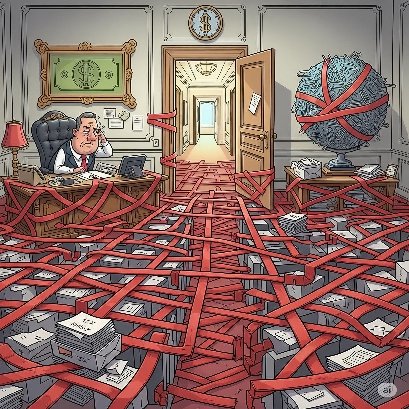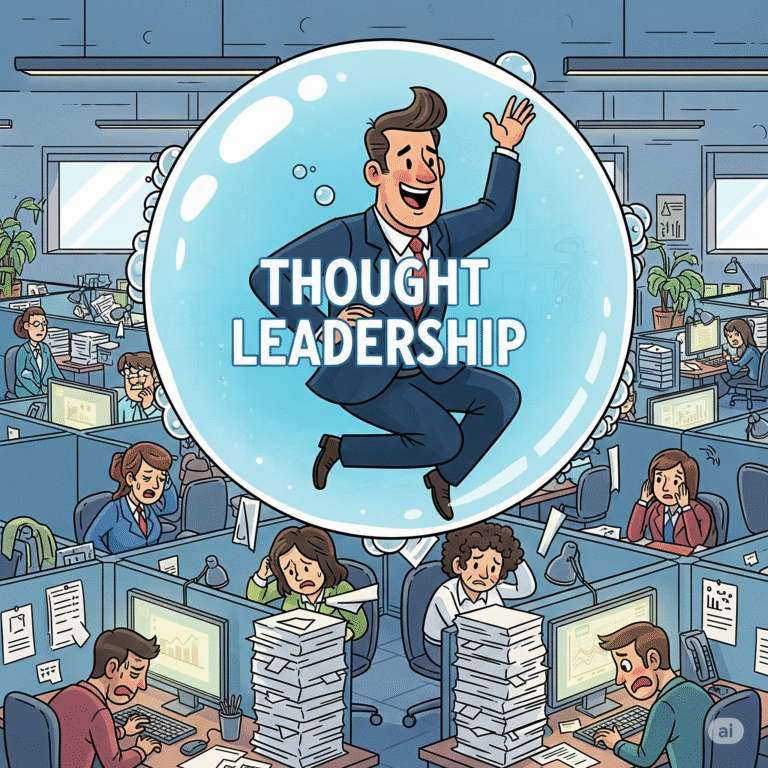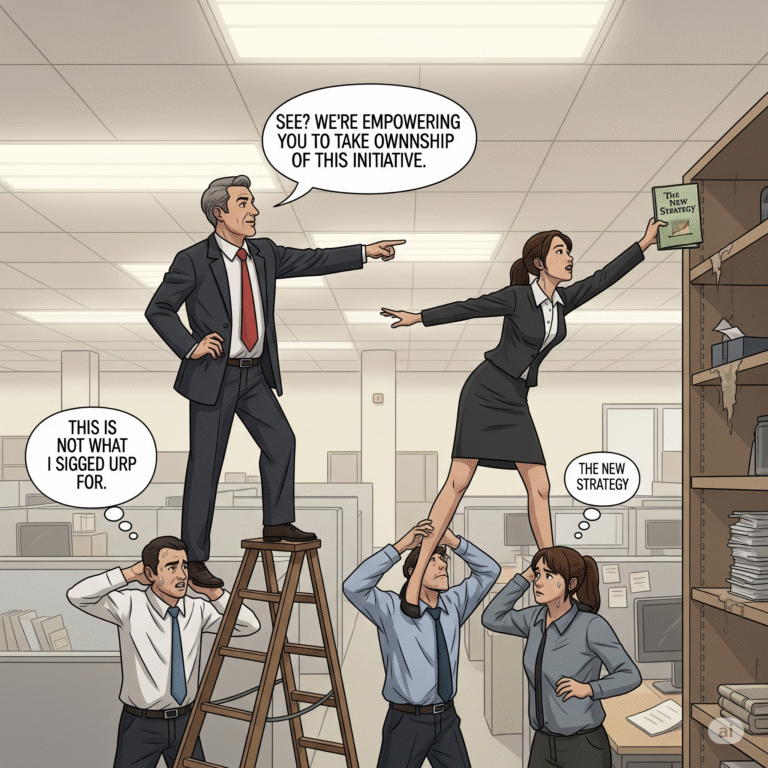
The Myth of the Open Door: When Access is Just Another Layer of RedTape
We’ve all heard the mantra: “My door is always open.” It’s a comforting phrase, often uttered by leadership, meant to foster a sense of approachability and open communication. It paints a picture of executives readily available to hear your concerns, ideas, or even just to offer a listening ear. But what happens when that “open door” is less of a welcoming entrance and more of the starting point of an obstacle course?
Take a good look at the image above. Does it feel familiar? The imposing executive chair, the symbols of corporate success, and in the distance, a seemingly open doorway. But try to imagine actually reaching that door. What’s in the way? A tangled web of red tape. Piles of paperwork. Unseen barriers that, while not physically blocking the path, create a very real sense of obstruction.
This, my friends, is often the reality behind the “open door policy.” While the intention might be noble, the execution often falls prey to the complexities of corporate hierarchy and unspoken rules. Sure, the door might be physically ajar, but consider the journey to get there:
- The Calendar Gauntlet: First, you’ll need to navigate their meticulously guarded calendar. Finding a slot that doesn’t clash with “strategic alignment meetings” or “high-level synergy sessions” can feel like winning the lottery.
- The Gatekeepers: Even if you secure a time, you might first need to pass through layers of assistants, each acting as a benevolent but firm guardian of their superior’s precious time.
- The Unspoken Prerequisites: What kind of issue warrants a trip to the “open door”? Is it truly open for everything, or are there unwritten rules about what’s “important enough”? Will you be perceived as someone who can’t handle things themselves if you seek guidance?
The red tape in our image isn’t just a visual metaphor; it represents all those invisible barriers. The fear of judgment. The feeling that you’re bothering someone important. The understanding that some issues are simply “noted” but never truly addressed.
So, the next time you hear about an “open door policy,” take a moment to consider the path to that door. Is it a clear and welcoming entrance, or is it a tangled mess of unspoken rules and bureaucratic hurdles? Sometimes, the most honest communication happens not through an open door, but through a clear and unobstructed pathway.

The Coldplayed Challenge of the Week
Your Challenge: This week, we’re navigating the maze of corporate communication with a key term from our book’s glossary.
This Week’s Word: Transparency
- Official Meaning: The quality of being open and honest.
- Real Meaning: The act of selectively sharing information to create the illusion of honesty.
Share Your Story: Have you ever encountered an “open door policy” that felt more like a closed circuit? Share your experiences with corporate “transparency” or any humorous (or frustrating) attempts to navigate workplace bureaucracy in the comments below or on social media using the hashtag #ColdplayedEffect.
Win an Early Copy: Every person who shares a story will be entered to win a free, early digital copy of “Beyond the Boardroom.”





